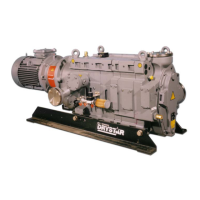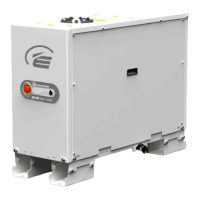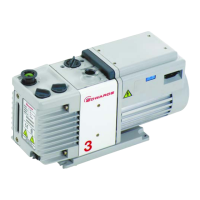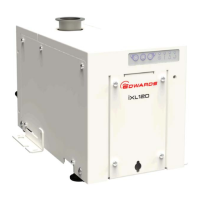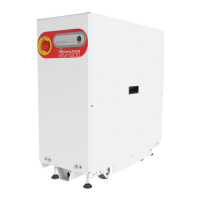© Edwards Limited 2012. All rights reserved. Page 25
Edwards and the Edwards logo are trademarks of Edwards Limited.
Operation
A705-61-880 Issue M
4 Operation
The procedures in the following sections assume that you have a pump inlet-isolation valve fitted to your pump.
4.1 Start the pump
Use the procedure below to start the pump.
1. Check the gearbox oil-level in the sight-glass on the side of the pump: refer to Section 3.5.
2. Turn on your cooling-water supply, shaft-seals purge air or nitrogen supply, gas-ballast nitrogen supply (if fitted)
and exhaust-extraction system (if fitted).
3. Switch on the pump.
4. Continue at Section 4.2 to allow the pump to warm up.
4.2 Allow the pump to warm up
Allow the pump to warm up and use full gas-ballast and inlet purge (if fitted) before you pump condensable
vapours. If you do not, the vapours may condense in the pump and corrode or damage the pump.
Leave the pump to operate (with the inlet isolation-valve closed) to allow the pump to warm up to its operating
temperature:
Without inlet purge, warm-up takes approximately 30 to 45 minutes, depending on the ambient
temperature.
With an inlet purge pressure of 50 to 250 mbar (5 x 10
3
to 2.5 x 10
4
Pa, 37.5 to 188 Torr), warm-up time can
be reduced to as little as 10 minutes.
Take all necessary safety precautions when you pump toxic, flammable or explosive gases. If you
do not, there will be a danger of injury or death to people.
During operation, some parts of the pump become hot; these areas are identified by ‘hot surface’
labels (see Section 1.1). Do not touch these areas of the pump, and avoid accidental contact
between these areas of the pump and electrical cables and wires, and so forth.
Do not operate the pump with a coupling cover removed. If you do, there will be a danger of injury
or death from the rotating mechanisms.
Do not operate the pump with the pump-inlet or pump-outlet open to atmosphere. If you do, there
will be a danger of injury or death from the rotating mechanisms, from the exposure to vacuum,
or from hot exhaust gases.

